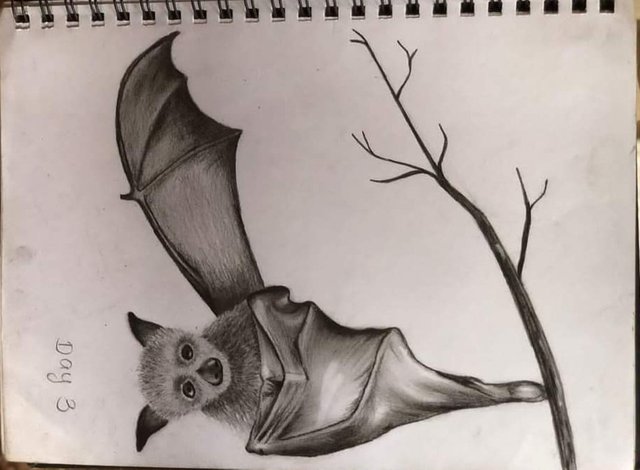A piece of pencil work of art

BAT are the only mammals in the world that can fly, and they are remarkably good at it. Their flexible skin membrane and movable joints allow them to change direction quickly and catch mosquitoes in midair.
For centuries, bats have been called sinister and spooky, likely because of their beady eyes and razor-sharp fangs. But there’s more to these nocturnal creatures than meets the eyes. There are more than 1,300 species of bats in the world, making them the second most common group of mammals after rodents. Some weigh less than a penny, while others have a wingspan of six feet, but all are impressive and vital members of their ecosystems.
The scientific name for bats is Chiroptera, which is Greek for “hand wing.” That’s because bats have four long fingers and a thumb, each connected to the next by a thin layer of skin.
Bats can be found nearly everywhere, except in polar regions, extreme deserts, and a few isolated islands. They spend their daylight hours hiding in roosts around the tropics, dense forests, and wetlands. Roosts are where bats go to rest, usually in cracks and crevices that keep them hidden and protected. The most common roosts are existing structures such as caves, tree hollows, and old buildings.
Insect-eating microbats consume millions of bugs a night, acting as a natural pest control for plants. Thanks to bats.